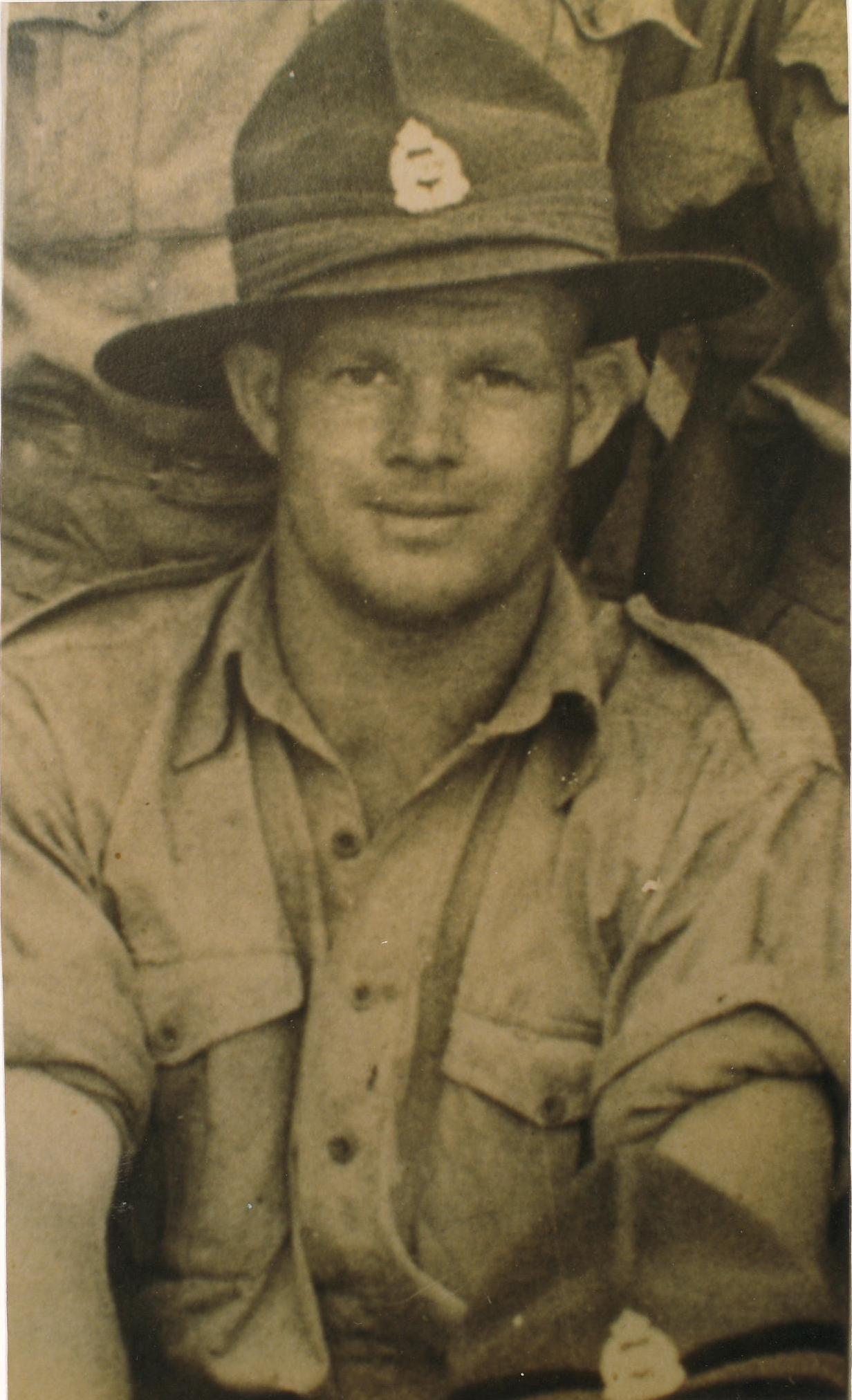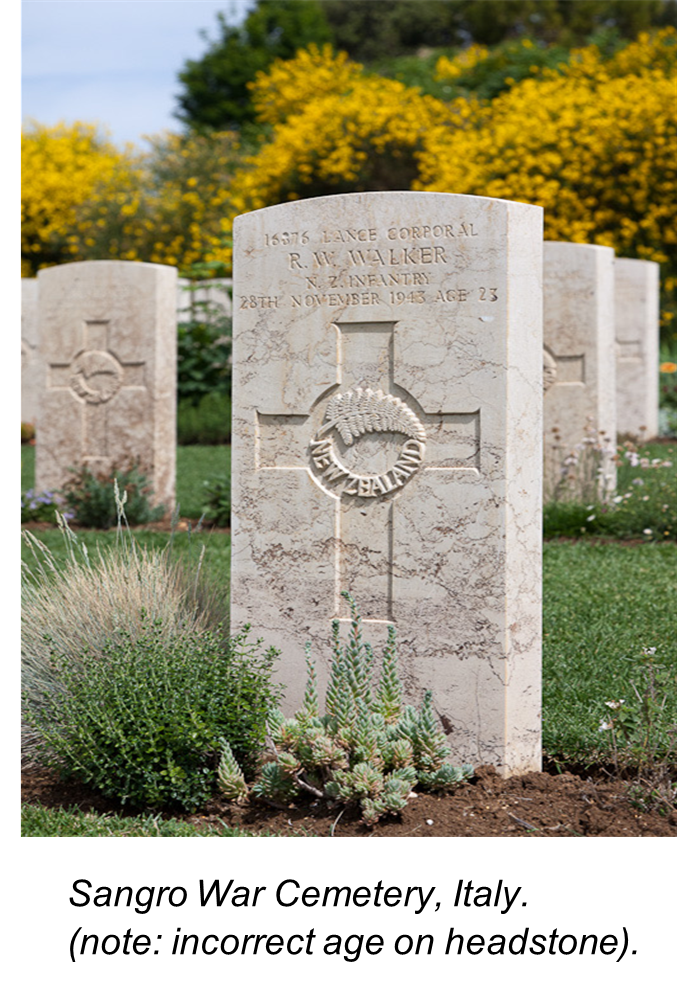Walker Place, Alexandra NZ. Location: 45.241638, 169.379281
Lance Corporal Reginald William Walker 16876, War Medal 1939 -1945 & New Zealand War Service Medal. 2nd New Zealand Expeditionary Force (WW2).

A local Alexandra man, Reginald William Walker (16/06/1918 – 28/11/43) was a dredge hand before he enlisted in the Army. He was one of two brothers who volunteered for active service with the 2nd New Zealand Division. Walker, who held the rank of Lance Corporal, was a member of 16 Platoon D Company, 23rd Battalion during the Italian campaign of 1943.
In October of that year, the 2nd NZ Division arrived in Italy after a successful U.S led invasion gained a foothold in the south. The Allied intention was to force their way up the peninsula and expel the occupying Germans, who had turned the mountainous landscape to a strongly held series of defensive positions. By the end of November the New Zealanders were poised to assault a strongly held German position known as the Winter Line, a formidable barrier that stretched right across the Italian peninsula. The 2nd NZ Division was assigned to breach the line in the Sangro River Valley, in the Orsogna Region.
The plan: before dawn on the 28th of November, New Zealand soldiers were to cross the Sangro River and launch an assault on the German held north bank. Complicating the task even further; the Sangro was severely flooded by continuous winter rains.
At 2.40am the 23rd Battalion began the attack. Lance Corporal Walker and his fellow soldiers of D Company slid down the bank and into the swift dark torrent. Ropes installed prior assisted with the hazardous crossing. Making it to the other side without incident they set out towards ‘Point 208’; a hill with the ruins of a church on the summit that dominated the vicinity. Upon reaching their objective the New Zealanders set up a forward observation post in order to direct artillery fire onto enemy positions.
In the official 23rd Battalion history, Lieutenant Colonel Angus Ross recounts what occurred next: shortly after daybreak the Germans mounted a counter attack on Point 208. Accurate machine gun fire lashed into the New Zealanders forcing them to seek cover within the ruins, thus leaving the front observation post unmanned. Taking advantage of this some 40 Germans stealthily crept forwards, using the terrain to remain hidden until they were virtually on top of the position. Completely surprising one platoon of defenders, the Germans quickly took 14 prisoners. Lance Corporal Walker’s (16) Platoon stationed nearby saw this and reacted immediately, opening fire on the numerically superior enemy. Walker and two others “who had stood up to bring their fire more effectively to bear on the enemy, were shot down by the raiders” (p. 289). Shortly afterwards the Germans were driven back by defensive artillery fire.

Military historian Christopher Pugsley described the scene that confronted NZ Brigadier Howard Kippenberger and Lieutenant Colonel Reg Romans (23rd Battalion commander) on Point 208 the following day. “The three riflemen still lay there and beside them we counted seven, ten and four empty cartridge cases respectively. Reg pronounced their epitaph: ‘They were good men'” (Pugsley p. 404-5).
Despite initial successes, the severe winter weather coupled with strong German resistance saw the offensive slowly grind to a halt. The 2nd NZ Division was withdrawn from the front line in January 1944 to recuperate.

The Division’s first two months of combat in Italy had left some 1600 men dead or wounded. Three hundred and fifty seven of them are interred in the Sangro War Cemetery, including Lance Corporal Reginald William Walker aged 25 yrs. The other Walker brother Clarence survived.
Lest we forget.
Reference.
Auckland War Memorial Online Cenotaph. Lance Corporal Reginald William Walker 16876. Sourced from: https://www.aucklandmuseum.com/war-memorial/online-cenotaph/record/C23931?srt=relevance&w=World+War+II%2c+1939-1945&n=16876&from=%2Fwar-memorial%2Fonline-cenotaph%2Fsearch&ordinal=0
Ross, Angus. (1959). 23 Battalion. Historical Publications Branch, Wellington. Sourced from: https://nzetc.victoria.ac.nz/tm/scholarly/tei-WH2-23Ba-c11.html


